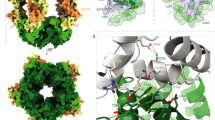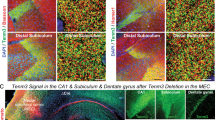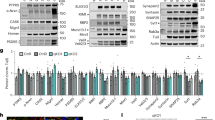Abstract
In the nervous system, homophilic and heterophilic adhesion molecules participate in the induction and differentiation of presynaptic transmitter release sites. We focus on the heterophilic interaction between postsynaptic neuroligin-1 (Nlg) and presynaptic β-neurexin (Nrx). Nlg has previously been shown to trigger presynaptic differentiation in a Nrx-expressing axon even when presented on a non-neuronal cell or on beads coated with lipid bilayers. We have now developed a new method to measure single molecule and ensemble distribution of Nrx and Nlg at the contact site between a non-neuronal Nrx-expressing cell and a flat supported glycosylphosphoinositol–neuroligin-1 (GPI-Nlg) lipid bilayer and relate them to adhesion as measured by cell migration and gravity dissociation. We find that within minutes after cell-bilayer contact, Nrx accumulates at the contact site and the contact area is expanded. The strength of cell-bilayer adhesion depends on the morphology of Nrx accumulation, with the focal concentration strengthening adhesion. The results suggest that Nlg-Nrx interaction rapidly establishes a weak, but specific, adhesion between dynamic pre- and postsynaptic processes, which may ultimately require additional molecules for synapse stabilization.
This is a preview of subscription content, access via your institution
Access options
Subscribe to this journal
Receive 12 print issues and online access
$259.00 per year
only $21.58 per issue
Buy this article
- Purchase on Springer Link
- Instant access to full article PDF
Prices may be subject to local taxes which are calculated during checkout





Similar content being viewed by others
References
Yamagata, M., Sanes, J.R. & Weiner, J.A. Synaptic adhesion molecules. Curr. Opin. Cell Biol. 15, 621–632 (2003).
Scheiffele, P. Cell-cell signaling during synapse formation in the CNS. Annu. Rev. Neurosci. 26, 485–508 (2003).
Garner, C.C., Nash, J. & Huganir, R.L. PDZ domains in synapse assembly and signalling. Trends Cell Biol. 10, 274–280 (2000).
Dityatev, A. et al. Polysialylated neural cell adhesion molecule promotes remodeling and formation of hippocampal synapses. J. Neurosci. 24, 9372–9382 (2004).
Sytnyk, V., Leshchyns'ka, I., Dityatev, A. & Schachner, M. Trans-Golgi network delivery of synaptic proteins in synaptogenesis. J. Cell Sci. 117, 381–388 (2004).
Shapiro, L. & Colman, D.R. Structural biology of cadherins in the nervous system. Curr. Opin. Neurobiol. 8, 593–599 (1998).
Benson, D.L. & Tanaka, H. N-cadherin redistribution during synaptogenesis in hippocampal neurons. J. Neurosci. 18, 6892–6904 (1998).
Biederer, T. et al. SynCAM, a synaptic adhesion molecule that drives synapse assembly. Science 297, 1525–1531 (2002).
Ichtchenko, K. et al. Neuroligin-1—a splice site–specific ligand for β-neurexins. Cell 81, 435–443 (1995).
Nguyen, T. & Sudhof, T.C. Binding properties of neuroligin 1 and neurexin 1β reveal function as heterophilic cell adhesion molecules. J. Biol. Chem. 272, 26032–26039 (1997).
Song, J.Y., Ichtchenko, K., Sudhof, T.C. & Brose, N. Neuroligin 1 is a postsynaptic cell-adhesion molecule of excitatory synapses. Proc. Natl. Acad. Sci. USA 96, 1100–1105 (1999).
Scheiffele, P., Fan, J.H., Choih, J., Fetter, R. & Serafini, T. Neuroligin expressed in nonneuronal cells triggers presynaptic development in contacting axons. Cell 101, 657–669 (2000).
Dean, C. et al. Neurexin mediates the assembly of presynaptic terminals. Nat. Neurosci. 6, 708–716 (2003).
Graf, E.R., Zhang, X., Jin, S.X., Linhoff, M.W. & Craig, A.M. Neurexins induce differentiation of GABA and glutamate postsynaptic specializations via neuroligins. Cell 119, 1013–1026 (2004).
Nam, C.I. & Chen, L. Postsynaptic assembly induced by neurexin-neuroligin interaction and neurotransmitter. Proc. Natl. Acad. Sci. USA 102, 6137–6142 (2005).
Axelrod, D. Total internal reflection fluorescence microscopy in cell biology. Traffic 2, 764–774 (2001).
Sonnleitner, A., Mannuzzu, L.M., Terakawa, S. & Isacoff, E.Y. Structural rearrangements in single ion channels detected optically in living cells. Proc. Natl. Acad. Sci. USA 99, 12759–12764 (2002).
Groves, J.T. & Dustin, M.L. Supported planar bilayers in studies on immune cell adhesion and communication. J. Immunol. Methods 278, 19–32 (2003).
Sapuri, A.R., Baksh, M.M. & Groves, J.T. Electrostatically targeted intermembrane lipid exchange with micropatterned supported membranes. Langmuir 19, 1606–1610 (2003).
Lee, G.M., Ishihara, A. & Jacobson, K.A. Direct observation of brownian motion of lipids in a membrane. Proc. Natl. Acad. Sci. USA 88, 6274–6278 (1991).
Fein, M. et al. Lateral mobility of lipid analogues and GPI-anchored proteins in supported bilayers determined by fluorescent bead tracking. J. Membr. Biol. 135, 83–92 (1993).
Hovis, J.S. & Boxer, S.G. Patterning and composition arrays of supported lipid bilayers by microcontact printing. Langmuir 17, 3400–3405 (2001).
Dustin, M.L. Role of adhesion molecules in activation signaling in T lymphocytes. J. Clin. Immunol. 21, 258–263 (2001).
Pierres, A., Benoliel, A.M. & Bongrand, P. Use of a laminar flow chamber to study the rate of bond formation and dissociation between surface-bound adhesion molecules: effect of applied force and distance between surfaces. Faraday Discuss. 111, 321–330 (1998).
McClay, D.R., Wessel, G.M. & Marchase, R.B. Inter-cellular recognition—quantitation of initial binding events. Proc. Natl. Acad. Sci. USA 78, 4975–4979 (1981).
Westcott, K.R. & Hill, R.L. Reconstitution of a porcine submaxillary gland β-D-galactoside α2—3 sialyltransferase into liposomes. J. Biol. Chem. 260, 13116–13121 (1985).
Hinterdorfer, P., Baber, G. & Tamm, L.K. Reconstitution of membrane-fusion sites—a total-internal-reflection fluorescence microscopy study of influenza hemagglutinin-nediated membrane-fusion. J. Biol. Chem. 269, 20360–20368 (1994).
Angrand, M., Briolay, A., Ronzon, F. & Roux, B. Detergent-mediated reconstitution of a glycosyl-phosphatidylinositol-protein into liposomes. Eur. J. Biochem. 250, 168–176 (1997).
Sackmann, E. Supported membranes: scientific and practical applications. Science 271, 43–48 (1996).
Acknowledgements
We thank C. Dean and P. Scheiffele for the GPI-Nlg construct, C. Dean for help with initial protein preparation, A. Pralle for help with the TIRF microscopy, H. Aaron for help with the confocal microscopy, and C. Dean, P. Scheiffele, E. Douglas, M. Forstner and S. Rozovsky for fruitful discussions. This work was supported by the Chemical Sciences, Geosciences and Biosciences Division, Office of Basic Energy Sciences, US Department of Energy (contract No. DE-AC03-76SF00098).
Author information
Authors and Affiliations
Corresponding authors
Ethics declarations
Competing interests
The authors declare no competing financial interests.
Supplementary information
Rights and permissions
About this article
Cite this article
Pautot, S., Lee, H., Isacoff, E. et al. Neuronal synapse interaction reconstituted between live cells and supported lipid bilayers. Nat Chem Biol 1, 283–289 (2005). https://doi.org/10.1038/nchembio737
Received:
Accepted:
Published:
Issue Date:
DOI: https://doi.org/10.1038/nchembio737
This article is cited by
-
Live-cell imaging of receptors around postsynaptic membranes
Nature Protocols (2014)
-
Micropatterned substrates coated with neuronal adhesion molecules for high-content study of synapse formation
Nature Communications (2013)
-
Synapse microarray identification of small molecules that enhance synaptogenesis
Nature Communications (2011)
-
Spatial organization and signal transduction at intercellular junctions
Nature Reviews Molecular Cell Biology (2010)
-
Lateral Mobility of E-Cadherin Enhances Rac1 Response in Epithelial Cells
Cellular and Molecular Bioengineering (2010)



